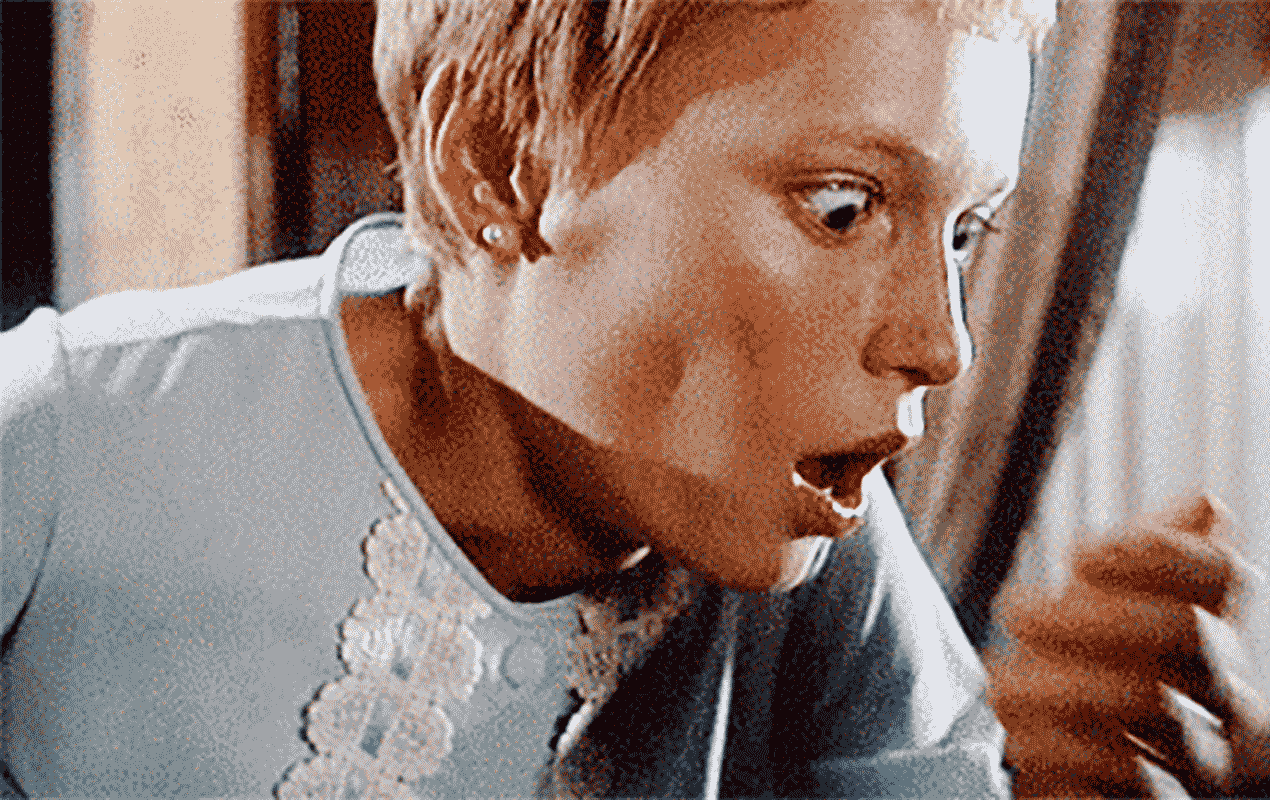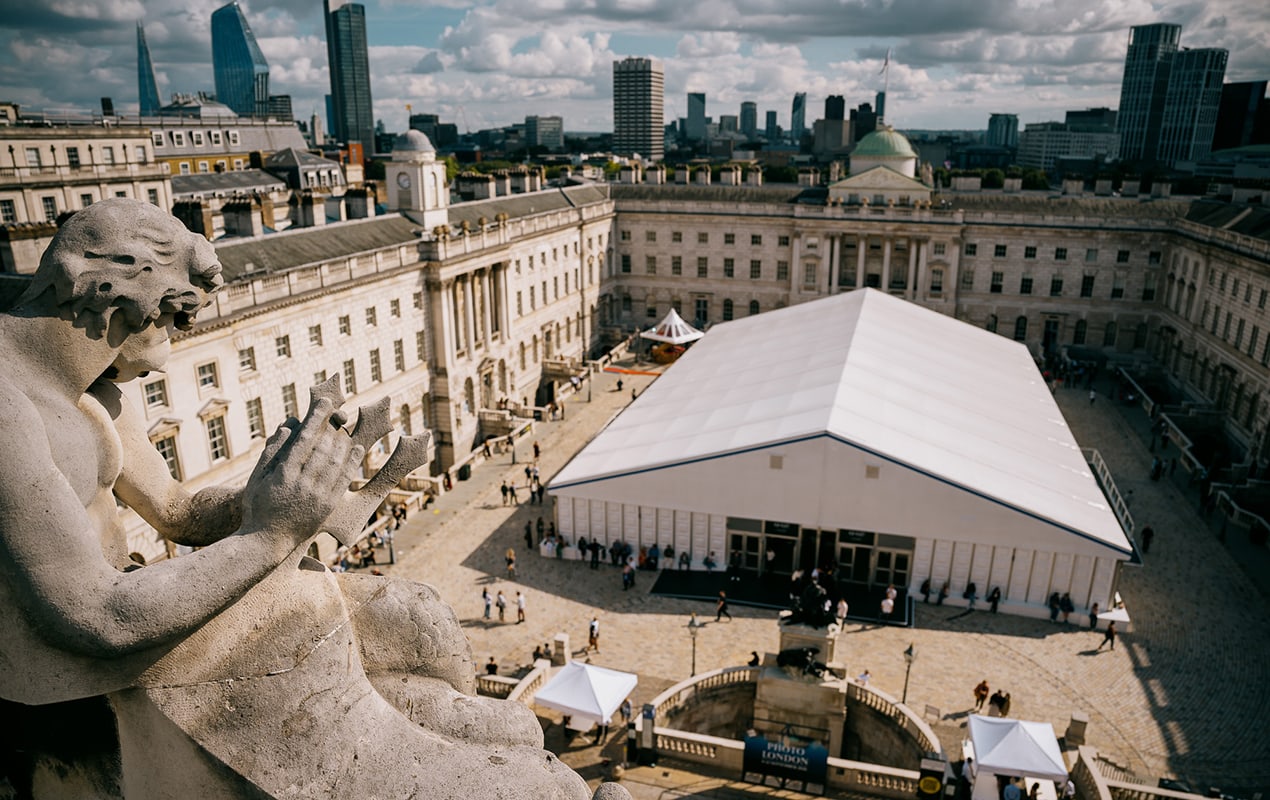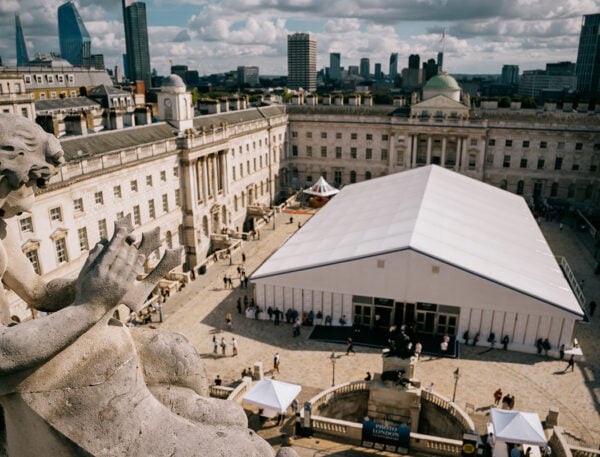While there are plenty of modern horror movies to choose from this Halloween, there’s something particularly unsettling about the classic horror films. The Sixties and Seventies were particularly chilling decades, producing film critic approved favourites including The Wicker Man, Rosemary’s Baby, The Omen and Psycho. From ghostly tales to terrifying bloodbaths, these are the cult horror films that are sure to send shivers down your spine.
Cult Horror Films
Rosemary’s Baby (1968)
No cult horror film list would be complete without Roman Polanski’s adaptation of Ira Levin’s modern-day tale of Satanism and occultism. Macabre and darkly comic, it tells the story of the emotionally-fragile Rosemary (Mia Farrow) and Guy Woodhouse (John Cassavetes), who move into a swanky-yet-spooky New York apartment. The young couple are trying for a baby and when Rosemary falls pregnant, she becomes obsessed that her husband – along with the seemingly friendly elderly neighbours Minnie and Roman Castevet – are all in a plot against her and the baby. Thus begins her spiral into a dark, dark world of unease and paranoia.
The Wicker Man (1973)
A British gothic cult classic, directed by Robin Hardy and loosely based on the novel Ritual by David Pinner. The protagonist is Police Sergeant Neil Howie (Edward Woodward), who is sent to the remote Scottish island of Summerisle in search of a missing child. But, surprise surprise, all is not as it seems. A devout Christian, Howie is shocked to discover that the isle’s inhabitants now practice a sinister form of paganism, fraught with bizarre rituals and provocative behaviour (Britt Ekland’s naked dance as the seductive innkeeper’s daughter Willow is one such example) – even human sacrifice is on the agenda.
Don’t Look Now (1973)
A thriller of epic edge-of-your-seat proportions. In Nicolas Roeg’s haunting adaptation of Daphne du Maurier’s shattering short story, Donald Sutherland and Julie Christie play grief-stricken couple John and Laura Baxter, who head to Venice in a bid to try and forget about the untimely death of their daughter Christine. Here, they encounter two elderly sisters who claim to be in touch with the young girl. While Laura takes heed, John ignores the psychics and omens. That is until a series of inexplicable, hideously scary experiences – including spotting a red-coated figure who resembles his daughter flitting amongst the local canals – leave him no choice, with what is often described as one of the greatest endings in horror history.
The Omen (1976)
This timeless blockbuster from prolific Hollywood director Richard Donner features arguably one of the most terrifying children to ever appear on screen. American diplomat Robert Thorn (Gregory Peck) and his wife Katherine (Lee Remmick) are living in Rome when she gives birth to their first child, a son. After tragedy strikes and Robert is informed that the baby has died, the hospital chaplain — bizarrely — convinces him to adopt another baby whose mother died during childbirth and to keep the switch a secret from his wife. Five years later, the decision comes to haunt Robert and his wife, as their “son,” Damien (Harvey Spencer Stephens) is gradually revealed to be a devil child, wreaking horrific havoc on their lives. The final shot will leave you unsettled for days to come.
Night of the Living Dead (1990)
Cannibalistic zombies take centre stage here, so be warned. This is the remake of the 1968 original and has built a cult following since its release as a classic ‘midnight movie’. Directed by Tom Savini and rewritten by George Romero, who co-wrote the original screenplay, it sees siblings Barbara and Johnny visit their mother’s grave in a remote Pennsylvania cemetery. Barbara gets attacked by decaying, blood-covered zombies and her brother is killed. Desperate, she – along with other survivors of these flesh-eaters – barricade themselves into a farmhouse where they are besieged by the living dead. With the zombies outside multiplying, can the group hold it together and rise above the tensions between them to focus on how an earth they’re going to escape before it’s too late?
Suspiria (1977)
Dario Argento’s much-lauded supernatural thriller was responsible for bringing the Italian horror subgenre ‘giallo’ into the mainstream in the 70s and 80s, and its stylish cinematography and demure pastel costumes have inspired everyone from Nicolas Ghesquière to the Rodarte sisters. The film follows Suzy (Jessica Harper), an American ballerina who transfers to a prestigious German dance academy only to discover, after a series of brutal murders take place, that it is in fact secretly a front for a coven. With its score by progressive rock band Goblin, stylistic flair and overly saturated use of primary colours, it’s a riot of sound and imagery that’s both terrifying and poetic in equal measure.
IT (1990)
Anything with Stephen King’s name attached to it is bound to get under your skin – and IT is no exception. The terrifying psychological miniseries is based on the horror writer’s novel of the same name and takes part in two different time periods. The first, in 1960, follows a group of outcast kids called ‘The Losers Club’ who come across an evil, predatory monster that can transform itself into its prey’s worst fears. In this case, it’s mostly in the form of Pennywise the Dancing Clown (played brilliantly by Tim Curry), a sadistic child-killer that will give you nightmares forever. Some three decades later, the group reunites to stop the demon once and for all, when it resurfaces in their hometown of Derry – with chilling results.
The Blair Witch Project (1999)
It’s hard to forget when this cult supernatural horror film first came out, such was the hype that surrounded it. The story follows a trio of student filmmakers who hike into Maryland’s Black Hills in 1994 to make a documentary about the Blair Witch, a supernatural killer said to haunt the local woods. When they lose their way, the film takes a terrifying turn and all three of them disappear. Their handheld cameras are discovered a few years later and it’s this amateur footage that forms the basis of the film, which is an absolute masterclass in suspense and scariness. Shot on an original budget of $35,000 to 60,000 in just over a week, and with much of the dialogue improvised, it became a surprise hit, grossing nearly $250million at the box office.
Psycho (1960)
Alfred Hitchcock’s masterful psychological thriller proves you don’t need blood and gore to terrify audiences – in the film’s infamous shower scene you never actually see a blade striking flesh, nor are there any wounds, yet it remains as profoundly shocking and petrifying as anything you’re likely to see in a full-blown slasher movie. Nominated for four Academy Awards, it follows on-the-run Marion Crane (Janet Leigh) as she checks into the Bates Motel and meets the shy proprietor, Norman Bates (Anthony Perkins). With its slick direction, tense atmosphere and unforgettable score, it’s often ranked among the greatest films of all time.
Ringu (The Ring) (1998)
While many may be more familiar with the 2002 Hollywood remake of the same name, starring Naomi Watts, film critics and horror buffs agree that the Japanese original is far superior. Directed by Hideo Nakata and based on the 1991 novel by Koji Suzuki, it follows reporter Reiko Asakawa (Nanako Matushima) as she investigates the mystery behind a cursed videotape when her niece and three friends die after watching it. Based in part on the 18th-century Japanese ghost story Bancho Sarayashiki, it offers up a deft demonstration of our reliance on technology and hums with minimalist intensity that builds up to a heart-stoppingly horrifying ending.
The Innocents (1961)
Often referred to as the horror buff’s horror film, Jack Clayton’s retelling of Henry James’s most famous ghost story, The Turn of the Screw, is a quietly simmering triumph that doesn’t rely on typical tropes of gore or violence to get its menacing message across. Co-written by none other than Truman Capote, it follows the potentially mad governess Miss Giddens – played by the multiple Oscar-nominated British actress Deborah Kerr – as she is hired to look after troubled Flora and Miles by their uncle (Michael Redgrave). Famed for its black and white cinematography and its elegant visuals, provided by legendary cameraman Freddie Francis (who worked with the likes of David Lynch and Martin Scorsese), this is one of the most stylish horror films in cinema history.
The Shining (1980)
Stanley Kubrick’s adaptation of Stephen King’s thriller has given us some of cinema’s most famous lines and delivered one of horror’s most stellar performances in Jack Nicholson’s tormented Jack Torrance. It tells the story of an aspiring writer and recovering alcoholic who accepts a position as the off-season caretaker of a vast, isolated hotel in the Colorado Rockies, along with his wife, Wendy (Shelley Duvall), and young son, Danny (Danny Lloyd). As Danny discovers he is gifted with ‘the shining’ – psychic abilities that allow him to see into the hotel’s gruesome past – Jack slowly starts to descend into madness. Darkly compelling, the plot has kept fans guessing for decades.
Carrie (1976)
Brian de Palma’s adaptation of Stephen King’s much-loved tale of the same name has gone down in blood-soaked horror history. Sissy Spacek plays the titular Carrie, a bullied, telekinetic teen who lives with her fanatically religious mother, Margaret. When Carrie is invited to her high school prom by one of the most handsome and popular boys in her class, she thinks perhaps her peers are finally starting to accept her – but, of course, the opposite is true, with bully Chris pulling the cruellest of pranks. It led to one of cinema’s most memorable scenes of all time – Sissy Spacek famously wore her blood-spattered prom gown for three days straight while in character as the murderess – which has left a permanent mark on mainstream culture.
The Amityville Horror (1979)
Featuring some of horror’s most-loved haunted house tropes, including bleeding walls and wild-eyed stares from feral animals, this supernatural thriller is reportedly based on the real-life Lutz family and their experiences living at 112 Ocean Avenue, the former site of a grisly mass murder in Long Island, New York. James Brolin and Margot Kidder play George and Kathy Lutz, a young married couple who move into their dream home with their three children. But they quickly learn all is not as it seems when the Catholic priest they call over is unable to bless the home. The paranormal events culminate in one stormy night, when a now-possessed George tries to kill the children with an axe. This is slasher fun at its finest.
Scream (1996)
It’s an iconic scene when Casey Becker (Drew Barrymore) picks up the phone and the voice of Ghostface is at the end of the line… we can all guess what’s coming next. Set in the small American town of Woodsboro, Scream follows high school student Sidney Prescott (Neve Campbell), whose mother was killed the year before, and her group of friends. They become the targets of costumed serial killer Ghostface (the mask has since become the go-to for Halloween parties around the world), who uses scary movies as part of a deadly game. Can news reporter Gail Weathers (Courteney Cox) try to figure out who the killer is? Though a satirical take on the slasher movies that had come before, director Wes Craven and writer Kevin Williamson’s meta-horror classic is the ultimate on-the-edge-of-your-seat movie.
Blood And Black Lace (1964)
One of the earliest examples of ‘giallo’ filmmaking, which literally translates as ‘yellow’ and is the Italian term for a certain type of stylish psychological thriller-horror, Mario Bava’s masterpiece is a sumptuous feast for the senses. The plot centres around a masked serial killer, who begins to pick off the models working within an Haute Couture fashion house in Rome one by one in a bid to get his hands on a scandal-revealing diary. It’s a location that lends itself to breath-taking visuals, with a deeply saturated use of colour one of the film’s trademarks – no wonder it’s gone on to be a major influence on everyone from Quentin Tarantino to David Lynch over the years.
Halloween (1978)
“I met this… six-year-old child with this blank, pale, emotionless face, and… the blackest eyes – the Devil’s eyes.” So said Dr Loomis (Donald Pleasance) of his young patient Michael Myers, who had stabbed his sister to death on Halloween night 1963 – at the age of just six. This classic slasher film picks up the story 15 years on, when Myers (Nick Castle) escapes from his psychiatric hospital and returns to his hometown of Haddonfield, Illinois, where he begins a killing spree of terrifying proportions. As he stalks and targets his victims – teenage babysitters, among them Laurie Strode (Jamie Lee Curtis) – Loomis desperately tries to track him down and stop him. One of the most influential horror films of its era, perhaps what’s most scary is that – while many people believed (and hoped) this was purely a work of fiction – the film’s director and co-writer John Carpenter actually based the psychopathic Myers on a person he’d once encountered at college.
An American Werewolf in London (1981)
Directed by John Landis this film sets the benchmark for horror-comedy, telling the story of two American friends David and Jack who are on a backpacking holiday on the Yorkshire moors. So far, so normal. However one night they are attacked by what appears to be a large wolf and Jack is brutally killed. Though David survives with a bite, he is plagued by nightmares in which Jack appears, in various stages of decay, and warns him he’s becoming a werewolf. And indeed he is. After moving to London, the changes begin and as soon as the full moon rises, David transforms into a murderous beast prowling the streets of the capital, leaving bloodied victims in his wake. After terrifying scenes in London Zoo, Trafalgar Square and Piccadilly Circus, to name a few, the wolf-David is shot dead, before returning to human form and dying in front of his distraught girlfriend Alex (Jenny Agutter).
The Vanishing (1988)
Dutch filmmaker George Sluizer’s The Vanishing is a psychological horror that is so unsettling that Stanley Kubrick once said it was the most terrifying film he’d ever seen. The film starts innocuously enough with Rex (Gene Bervoets) and Saskia (Johanna ter Steege), a young couple on a sunny biking holiday in France, stopping for supplies at a petrol station. But then… Saskia disappears into thin air. Nobody sees her leave and the police are totally stumped. What follows is Rex’s three-year investigation into her disappearance, but the unusual thing here is that the viewer knows more than Rex – we know who is responsible for Saskia’s disappearance. Indeed, the film takes us inside the psyche of her abductor Raymond (Bernard-Pierre Donnadieu), a scarily normal sociopath. As Rex begins to unravel the truth, this is proper sit-on-the-edge-of-your-seat stuff.
Diabolique (1955)
When Henri-Georges Clouzot released Diabolique in the 1950s it sent shockwaves through cinema audiences. The thriller take place in a French boarding school where the sadistic, bullying headmaster Michael Delassalle (Paul Meurisse) is murdered by an unlikely pair – his timid, fragile wife Christina (Vera Clouzot) and his force-of-nature mistress Nicole (Simone Signoret). The plot unfurls after the two women dump his body in the swimming pool and it disappears, with Delassalle’s suit mysteriously being returned from the dry cleaners. There follows twists and turns aplenty, in which betrayal, mistrust and guilt all play their part, as Inspector Fichet (Charles Vanel) tries to get to the bottom of the story.
The Exorcist (1973)
It’s been almost 50 years since William Friedkin’s The Exorcist first terrified filmgoers, and it’s no less horrifying today. Based on William Peter Blatty’s bestselling novel – which in turn was inspired by the true account of an exorcism that happened to a 13-year-old boy in a psychiatric clinic in 1949 – it follows the demonic possession of 12-year-old Regan and her devoted mother (played by Ellen Burstyn) as she attempts to rescue her via an exorcism performed by Catholic priests. The Oscar-winning flick is often dubbed the scariest film of all time, and with good reason – after a slow-burn start, it builds up to an intense and wild climax, proving nothing is more chilling than a possessed child.
Nosferatu the Vampyre (1979)
A dark German art house film – written and directed by Werner Herzog – which is a remake of F.W.Murnau‘s 1922 German Dracula adaptation Nosferatu, but set in the 19th century. It sees Jonathan Harker (Bruno Ganz) travel to Transylvania to visit Count Dracula (Klaus Kinski) whereupon the Count proceeds to sink his fangs into Harker, before setting his sights on seducing and sucking the blood of Harker’s beautiful wife Lucy (Isabelle Adjani). Dracula makes his way to Wismar in Germany to find Lucy, spreading destruction and evil as he goes – but who can end Dracula’s reign of terror? The scenery throughout this gothic masterpiece is eerily beautiful – from the bleak graveyards to the mist-shrouded mountains.
The Birds (1963)
Alfred Hitchcock’s The Birds is loosely based on Daphne Du Maurier’s short story of the same name – but with ultra-terrifying special effects. It sees Tippi Hedren make her screen debut as Melanie Daniels, who meets Mitch Brenner (Rod Taylor) in a San Francisco pet store. She decides to follow him to his hometown of Bodega Bay and gifts him a pair of love birds – a romance ensues. But that’s not the last we see of our feathered friends. Soon after, a flock of crows attacks a party – injuring several children – then gulls engulf a petrol station, and before we know it there’s a series of escalating attacks by birds on the small fishing village. Though Hitchcock gives no reason behind these avian assaults, they become increasingly petrifying and the inhabitants of Bodega Bay must fight for their lives.
Possession (1981)
A psychological horror drama from Polish art house film director Andrzej Zulawski. Sam Neill plays international spy Mark, who returns home one day to discover that his wife Anna (another horror role for French actress Isabelle Adjani for which she picked up the Best Actress award at the 34th Cannes Film Festival) wants a divorce. Mark is devastated and hires a private investigator; Anna’s behaviour, meanwhile, becomes increasingly erratic as she gradually descends into madness. What follows is a tale of murder and gore, of bizarre tentacled creatures and brutality, at times so horrific that the film was initially banned in the UK and US when it first came out. It has since been re-released, reaching cult status despite its intense, impossible-to-forget ending.









